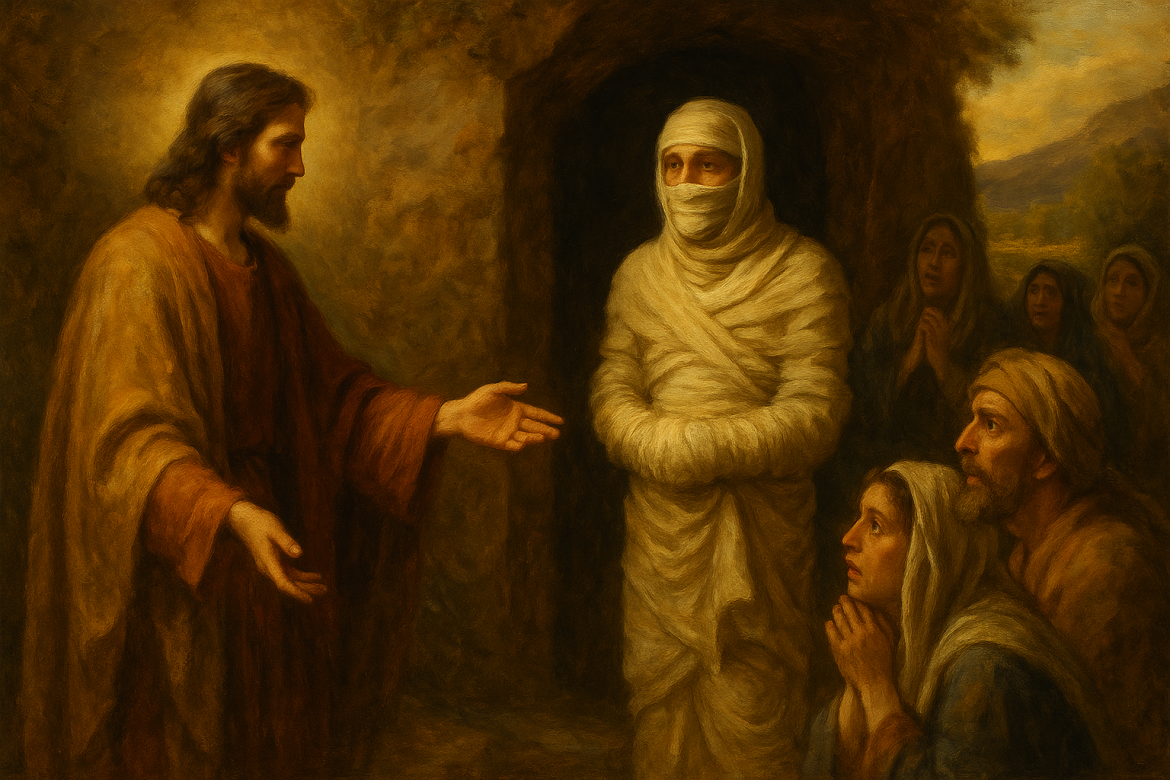In John 11, we encounter the profound story of Lazarus’s death and resurrection. This narrative is not merely a testament to Jesus’s miraculous powers but a deep exploration of faith, trust, and divine purpose. Set in Bethany, a small town near Jerusalem, this chapter reveals the intimate relationship Jesus shared with Lazarus and his sisters, Mary and Martha, and underscores the peril Jesus faced from the temple authorities.
Lazarus’s illness sets the stage for an extraordinary display of Jesus’s divine mission. When Mary informs Jesus of Lazarus’s sickness, she speaks with an implicit trust, not making a direct request but relying on Jesus’s wisdom and love. Interestingly, Jesus chooses to delay his visit by two days, signaling that Lazarus’s condition will ultimately glorify God.
This delay perplexes Jesus’s disciples, particularly Thomas, who exhibits a blend of doubt and loyalty, foreseeing danger in returning to Judea. Yet, Jesus’s decision to go despite the risks illustrates his unwavering commitment to his mission and his friends.
Upon arriving in Bethany, Jesus encounters Martha, who expresses her belief in Jesus’s power even amidst her grief. Jesus declares, “I am the resurrection and the life,” affirming that faith in him transcends physical death. This moment is a cornerstone of Christian theology, emphasizing eternal life through belief in Christ.
As Mary joins the scene, her profound sorrow moves Jesus to tears, demonstrating his empathy and deep emotional connection to human suffering. This moment, encapsulated in the Bible’s shortest verse, “Jesus wept,” underscores the duality of Jesus’s nature as both divine and deeply human.
The climax occurs at Lazarus’s tomb, where Jesus commands the stone to be removed despite concerns about the body’s condition. His prayer to God is a public testament to his divine authority and mission. With the command, “Lazarus, come out,” the miracle unfolds, and Lazarus emerges, alive and bound in burial cloths, symbolizing the triumph over death.
This miracle leads to varied reactions. Some witnesses believe in Jesus, while others report the event to the Pharisees, intensifying the plot against Jesus. Caiaphas, the high priest, rationalizes Jesus’s death as necessary for the nation’s survival, ironically fulfilling the prophecy of Jesus’s sacrificial death for humanity’s salvation.
John 11 concludes with Jesus retreating to Ephraim, highlighting the growing tension and foreshadowing his eventual crucifixion. This chapter invites reflection on the interplay between divine providence and human actions, illustrating how faith can transform suffering into a testament of God’s glory.
In summary, the story of Lazarus in John 11 teaches us about unwavering faith, the power of divine love, and the ultimate purpose behind life’s trials. It calls believers to trust in God’s plan, even in the face of death, and to witness the miracles that faith can unveil.

